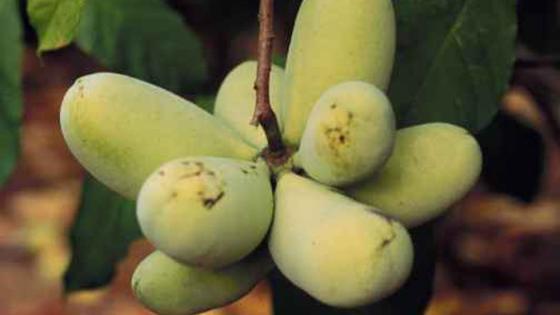
Pawpaw
Pawpaw
Pawpaw (Asimina triloba) is a unique tree fruit native to the eastern United States. Its highly aromatic fruit has a sweet, almost tropical-like flavor. The large fruit is oblong and typically produced singly or in clusters of two to nine. Pawpaw fruit pulp can be eaten fresh or prepared in a variety of desserts. Kentucky is fortunate to have the USDA National Clonal Germplasm Repository for Asimina spp. located at Kentucky State University in Frankfort.
Key Requirements
| Land | Medium |
| Labor | Medium to High |
| Capital | Medium |
Take the HortBizQuiz to see how much Land, Labor, and Capital you have for your operation.
Markets
- Direct to Consumer
- Farmer's Market
- On-Farm Stands
- Local Grocery
Pests & Disease
Pawpaws are relatively disease-free and have few insect pests, which could make this a potential crop for organic production. Occasionally, Japanese beetles can damage vegetation. Pawpaw peduncle borer larvae feed on the stems of flowers, resulting in flower drop, and also have been found boring into twigs and fruit.
Costs and returns are presented as estimates. They will vary based on your farm and markets.
Costs and returns are presented as estimates. They will vary based on your farm and markets.
Challenges
- Unfamiliar fruit to many so marketing can be a challenge.
- Can take a few years for trees to begin bearing fruit meaning returns per acre will take time.
Opportunities
- Can be used as an ingredient in specialty and value-added foods, including juices, wine, beer, jam, ice creams and desserts.
- Researchers have also found naturally occurring compounds with insecticidal and anti-cancer properties in the bark, twigs and leaves.